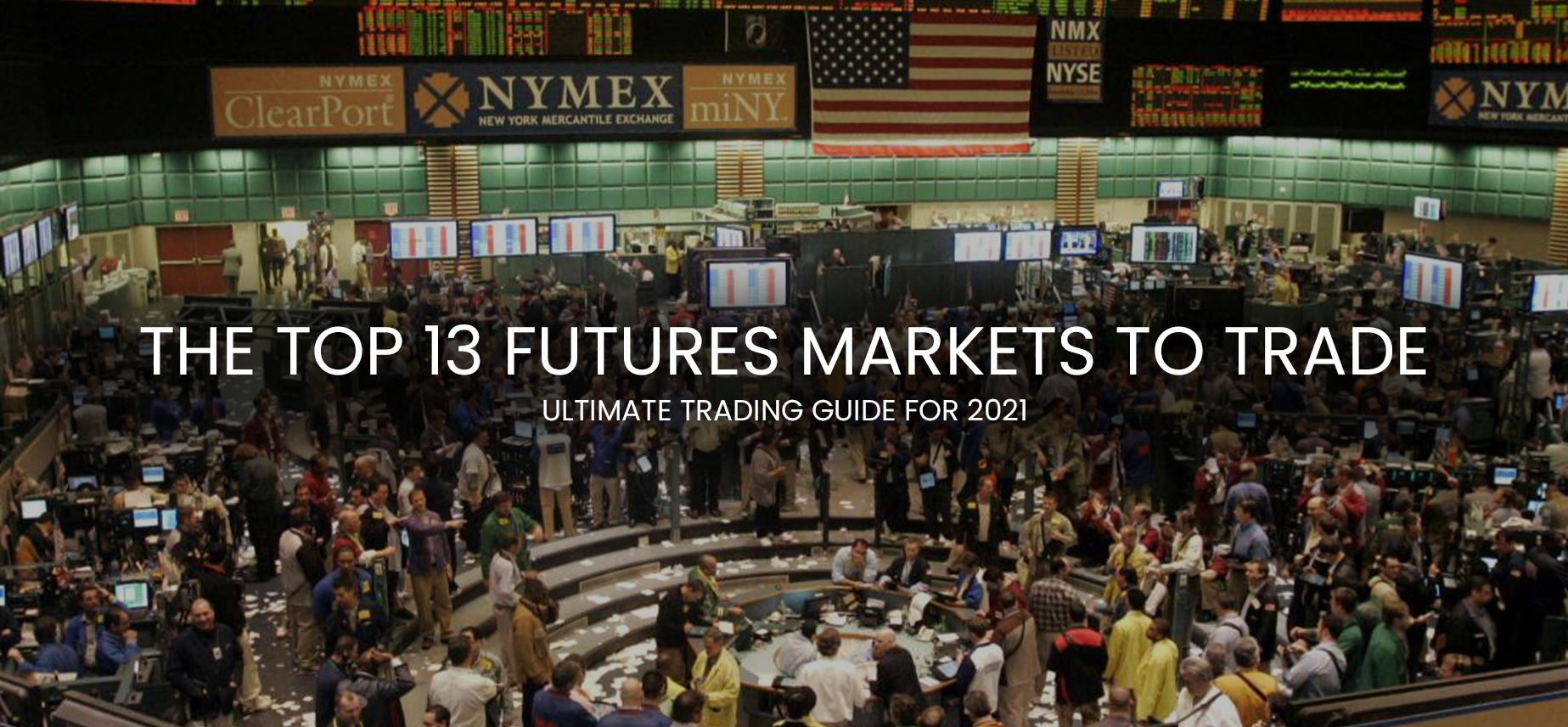
The Top 13 Futures Markets To Trade – Ultimate Trading Guide for 2022
Thanks to great volatility and transparency, the futures market is one of the best markets you can choose to trade.
In this article we will have a look at different markets you can trade and what are their pros and cons.
If you like this article, read the rest of the blog or join the Tradingriot Bootcamp for a comprehensive video course, access to private discord and regular updates.
For those who are looking for a new place for trading crypto, make sure to check out Woo. If you register using this link and open your first trade, you will get a Tier 1 fee upgrade for the first 30 days, and we will split commissions 50/50, which means you will get 20% of all your commissions back for a lifetime. On top of that, you will receive a 20% discount for Tradingriot Bootcamp and 100% free access to Tradingriot Blueprint.
Table of Contents
What is a Futures contract?
A futures contract is an agreement between a buyer and seller to trade an underlying asset at an agreed price upon a specified date.
An underlying asset can be commodities such as gold, silver, or oil.
Equity indices like S&P500, Nasdaq, Dax, or Nikkei.
But also cryptocurrencies or interest rates.
Each futures contract has its own specific code.
If you are looking for S&P500 futures, you might find something like ESZ2020.
ES represents the underlying asset and “Z” stands for an expiration which is December.
2020 obviously stands for a year.
This is quite straightforward although the letters for different months can look quite random.
- January – F
- February – G
- March – H
- April – J
- May – K
- June – M
- July – N
- August – Q
- September – U
- October – V
- November – X
- December – Z
Every futures contract is unique with different expirations periods.
Equity indices expire once in three months.
Crude oil expires monthly.
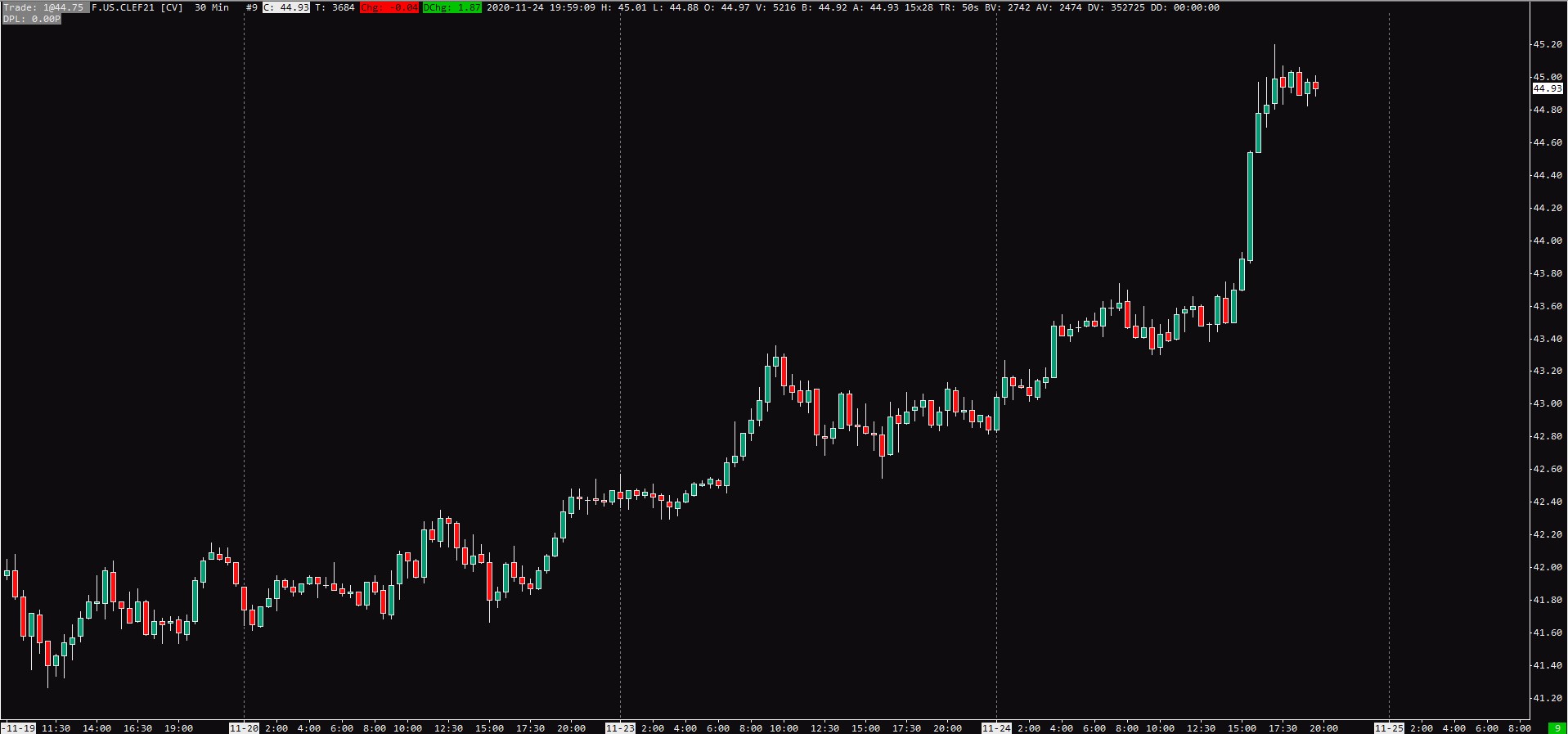
The “Front Month” contracts are the most traded ones and as futures are settled in cash and most trading platforms rollover your contacts automatically, this is not something you need to learn or pay too much attention to.
What makes a great Futures market
The main reason for this article is the fact that every futures market has its own specifics and characteristic that I describe later on.
In general, you should consider four things while choosing your futures market.
Margins, Contract size, Trading hours, and Ordeflow.
Margins
Thanks to the leverage, we can use only a fraction of our capital for buying or selling futures.
If you are starting with smaller capital, you might not be able to open any trade thanks to the high margin requirements.
Also if you are in a trade that goes against you, you might receive a margin call, or more commonly your position gets automatically liquidated and you will pay an extra fee for that.
Because of that, the lower margin requirements are better in general, if you follow the proper risk management.
As an example, you can have a look at margin requirements for Equity Indices at AMP Futures which is the broker I am currently using.
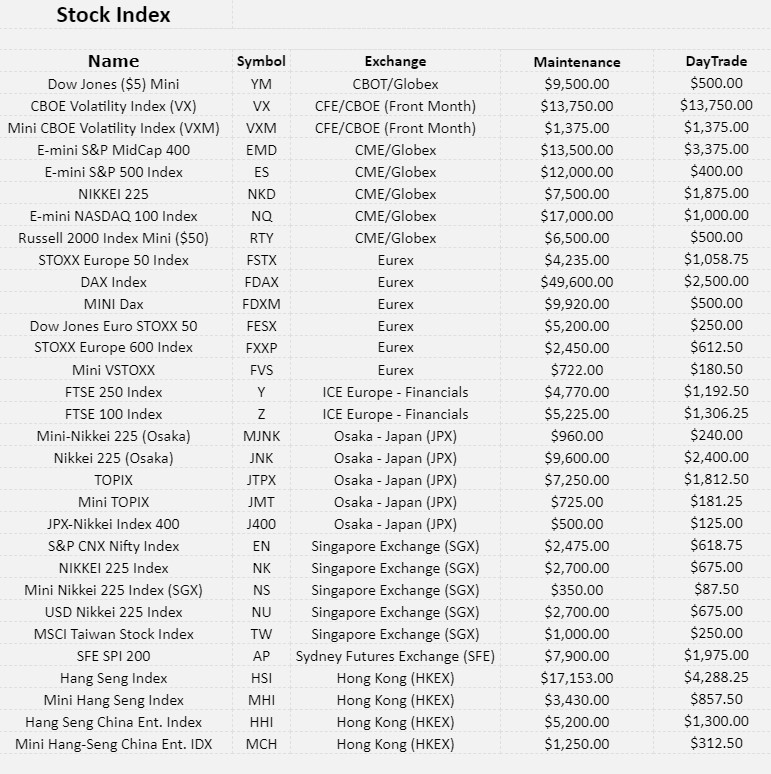
Daytrade margin stands for a margin amount you need during the regular trading hours to open 1 contract.
Maintenance margin is the margin you need to have on your account if you want to carry your position overnight.
Contract Size
Most traders don’t have deep enough pockets to open trades with larger stop losses or pay overnight margins in markets such as E-mini S&P500 or Crude Oil.
Although futures markets got more accessible in recent years thanks to mini and micro contracts.
Knowing how much will cost you trading the market of your choice in terms of margins and tick values is a crucial thing you should take into consideration.
Trading Hours
Most of the markets trade for 23 hours a day 5 days a week so you can trade them pretty much anytime you want if they are opened.
But every market has something called RTH – Regular Trading Hours.
These are based on trading hours of major exchanges, former pit hours, etc.
There are time windows throughout the day where there is the most volume in any given market.
If you take a look at E-mini S&P500, the regular trading hours start at 9:30 am and last until 4:15 pm East Coast (New York) time.
So if you live in Europe and you want to trade E-mini S&P500 during London morning hours when everyone in the United States is asleep.
You might quickly realize that there is not much to do in that market and you should probably start look at Eurex exchange instead.
Picking out the product where you can trade during hours with high volume will ease your trading as you should be able to find a handful of opportunities throughout your trading session.
Orderflow
This is a complex theme so I dedicated an article solely for Orderflow trading.
To make things simple we can separate the futures market into two categories, thin and thick markets.
Thin Markets
Thin markets have high volatility and are less liquid.
What this means in practice is that you can see bigger daily ranges and markets moving up and down almost all the time.
Day traders and scalpers usually seek high volatile markets, but thin markets have some disadvantages.
First of all, as markets move quickly up and down you can very easily end up on the wrong side of the trade very quickly.
Thin markets also tend to overshoot certain levels so you cannot rely too much on your lines or indicators.
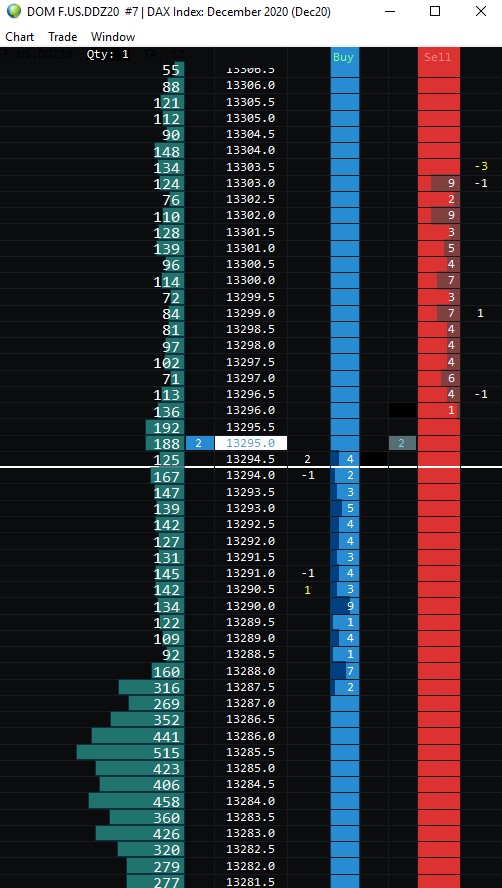
There is also one more problem with thin markets which although most traders don’t have to deal with right now, can become a problem in the future.
It is the fact that you can become too big for the market and won’t be able to trade it without moving it or getting slipped on all your trades.
The DOM above shows Dax futures with €25 for 1 point movement.
If you decide to buy a 20 lot on Dax, you can see there is 1 tick spread already and then you would also move the whole market by around 2-3 points.
Of course, trading 20 lot on Dax means that every point equals 500€ and with Dax being a very volatile product that moves several hundred points a day, you would really need a big trading account, to begin with.
As most traders start with a few thousand dollars, this is a distant scenario, but you never know.
Other besides Dax other thin markets are cryptocurrency futures, dow jones futures, or currency futures.
Thick Markets
Thick markets are less popular amongst retail traders as they have much lower daily ranges and the moves take a longer time to play out.
This is due to the high liquidy as at every price level there is a lot of contracts sitting and it takes a much longer time for the market through these contracts.
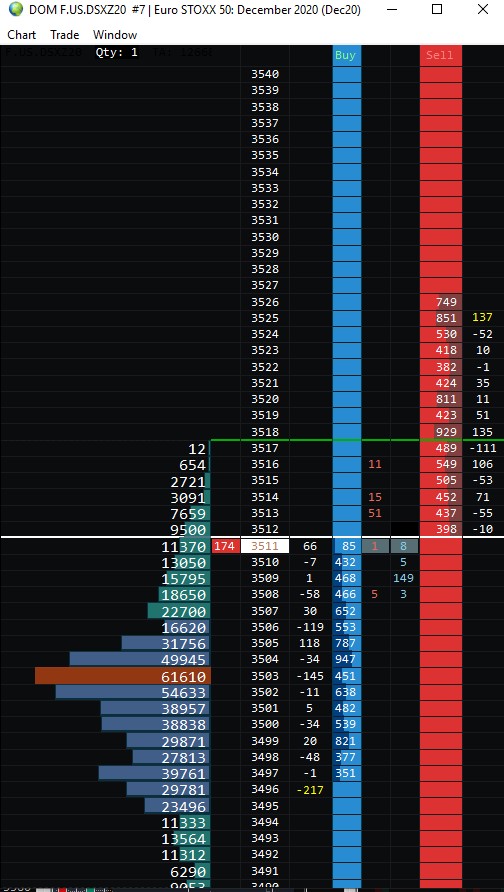
As you can see by looking at the DOM of Euro Stoxx 50 which is the futures contract with the highest traded volume on Eurex, it’s completely different compared to Dax.
Although retail traders tend to skip these markets as they are just too slow, you often see a lot of proprietary and institutional traders trade these.
Me personally, I am a big fan of day trading thick markets as they respect levels very precisely, and thanks to their slower movements you can have a clean read on orderflow and enough time to execute your position compared to thin market which sometimes gives you only a few second windows to get in.
Futures compared to Forex and CFDs
Thanks to the transparency in the futures market I am able to use tools such as Volume Profile or Footprint Charts which I explain in the detail in the Trading Blueprint.
Because of that trading futures is a better choice for me and should be for everyone who wants to utilize these tools.
Forex is a great market and if you are looking to trade currencies such as Euro, Pound, etc.
I recommend you to do it in the Forex spot market instead of trading currency futures.
It is because spot forex represents a much bigger volume to currency futures and you have a higher chance of slippage while you are trading currency futures over spot forex.
Also if you want to trade thin markets such as Nasdaq or Dax where spreads don’t play a significant role, you can do it in the CFD market as you need much less capital for trading compared to futures.
You still can look at the footprint charts or DOM and executing in spot forex or CFDs, only place where I do not recommend it is if you decide day trading thick contracts like Euro Stoxx, Bund, or even S&P500, Crude Oil, or Bitcoin.
Although not all of these are thick markets, they have bigger spreads at most forex brokers so it doesn’t make much sense trading them.
The Top 13 Futures Markets To Day Trade
In this section, I will cover the best futures markets to trade and their specific characteristics.
I will be using the same four characteristics I described before and some additional stuff like commissions and different characteristics from my personal experience.
E-mini S&P 500 Futures (ES)
E-mini S&P 500 Futures with the ticker symbol ES, are one of the most popular futures to trade.
Thanks to the popularity of ES, there is a lot of brokers who try to offer the best conditions possible to get new clients.
This is why you will need only around $500 for day trading one ES contract.

One tick in ES equals 0.25 and it is valued at $12,50.
So if ES moves from 3000 to 3001, it is a 4 tick movement which will represent $50.
A commission for a round turn in ES will cost you around 3-4 dollars.
With around 1,000,000 daily traded volume ES is quite liquid and thick markets although it used to be much thicker before the crash in March 2020.
But this is the case for all futures markets.
Because of its liquidity, you won’t have a problem get in and out of the positions, and in most situations, you will have plenty of time to decide about your trading decision as ES is not really a fast jumpy market.
The best time to trade ES is during RTH which is from 9:30 am to 4:15 pm New York time.
Although you can find opportunities during ETH (Electronic Trading Hours) trading during the main session gives you the highest chance for good setups.
Although you need only a $500 margin for one contract, 10 point movements are not unusual in the ES, especially nowadays.
Because of that, you should have at least a $5000-$10,000 account if you consider trading ES.
Those that want to start small can trade Micro E-mini S&P 500 Futures.
Micro contract with a ticker MES is available for all major US indices and represents 1/10 of E-mini sizes.
So instead of a $50 move from 3000 to 3001, you will be looking at only a $5 move.
Margins are also 1/10 of the E-mini contract so you will need only $50 to open a trade.
Micros are great for those who want to test the futures market with a lower account or those that plan to hold longer-term swing positions and can’t afford the overnight margin which is $12,000 for ES, but only $1,200 for MES.
The only thing you should be aware of is that commission on MES are not 1/10 but only 1/5

This means that if you plan to scalp Micro E-mini S&P 500 Futures, you might end up with much smaller gains thanks to commissions.
Nasdaq (NQ)
Those traders that want to trade equity index futures, but look for something more fast-paced compared to E-mini S&P 500 Futures have pretty much a choice of three products.
- Dow Jones (YM)
- Russell (RTY)
- Nasdaq (NQ)
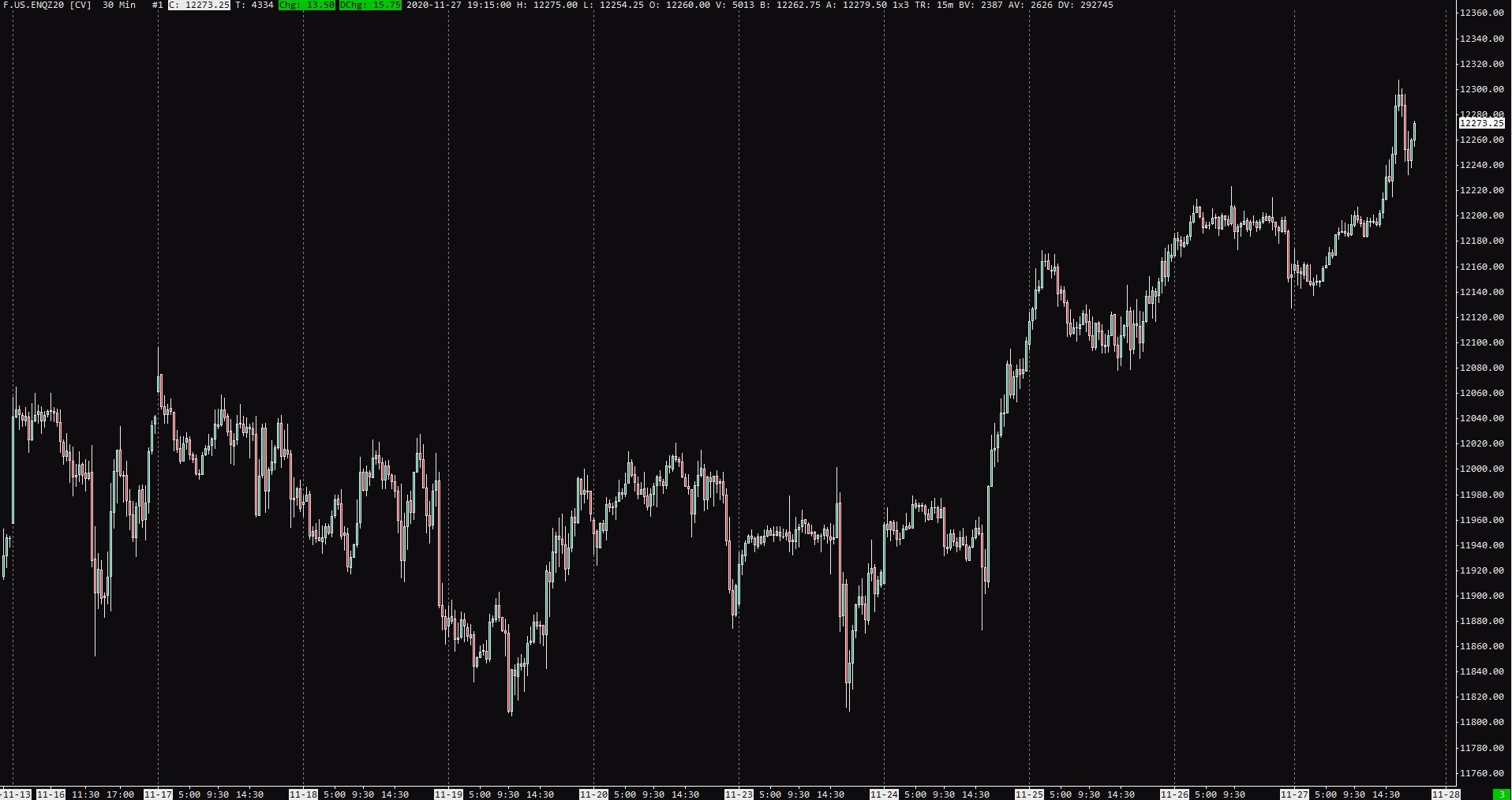
All of these contracts have a minimum value per tick of $5 and all of them, same as ES, have a micro contract which is 1/10th of the size of a regular e-mini.
The RTH session is the same as on ES from 9:30 am to 4:15 pm New York time.
The Nasdaq futures are the most popular ones with being around the third place on the highest traded volume on CME.
Margin requirements are usually the same for all equity indices at around $500 although they sometimes get increased in the higher volatility environments.
Since Nasdaq futures are based on the stock index Nasdaq which tracks the 100 largest tech companies, you can notice a lot of volatile movements due to the popularity of trading in the tech sector.
Considering the fact that an average true range for the last 21 days (November 2020) is around 200 points, with 1 point valued at $20, there is a lot of money to be made or lost every day.
If you consider trading equity indices one thing that is worth following is the correlation between all the instruments.
In theory, they should be moving hand in hand but sometimes there is one which lags behind the other and in these situations, you might discover an interesting trading edge.
Due to already mentioned popularity in the tech sector, Nasdaq is the biggest mover of all four equity indices.
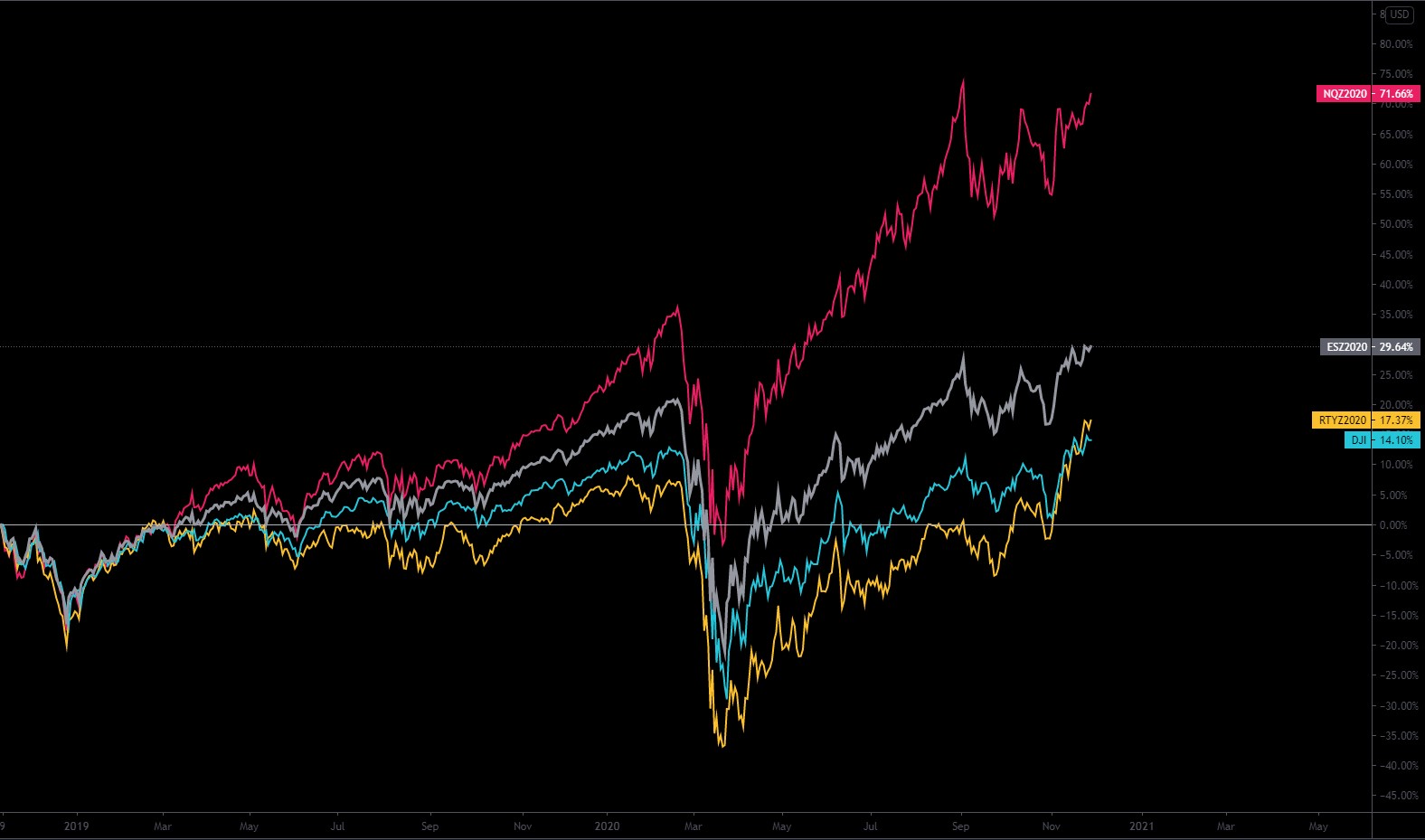
If you decide to trade NQ, make sure you have enough capital and sufficient risk management since things can turn wrong very quickly in these fast-paced markets compared to something like ES or treasuries where you oftentimes have more time to exit a trade that is going against you.
10-Year Treasury Note (ZN) and other US Treasuries
Compared to trading equity indices or commodities, understanding the treasury futures is a little more complicated.
Currently, there are six treasury contracts traders can trade on CME.
- 2-year T-Note (ZT)
- 5.year T-Note (ZF)
- 10-year T-Note (ZN)
- Ultra 10-year T-Note (TN)
- U.S Treasury Bond (ZB)
- Ultra U.S Treasury Bond (UB)
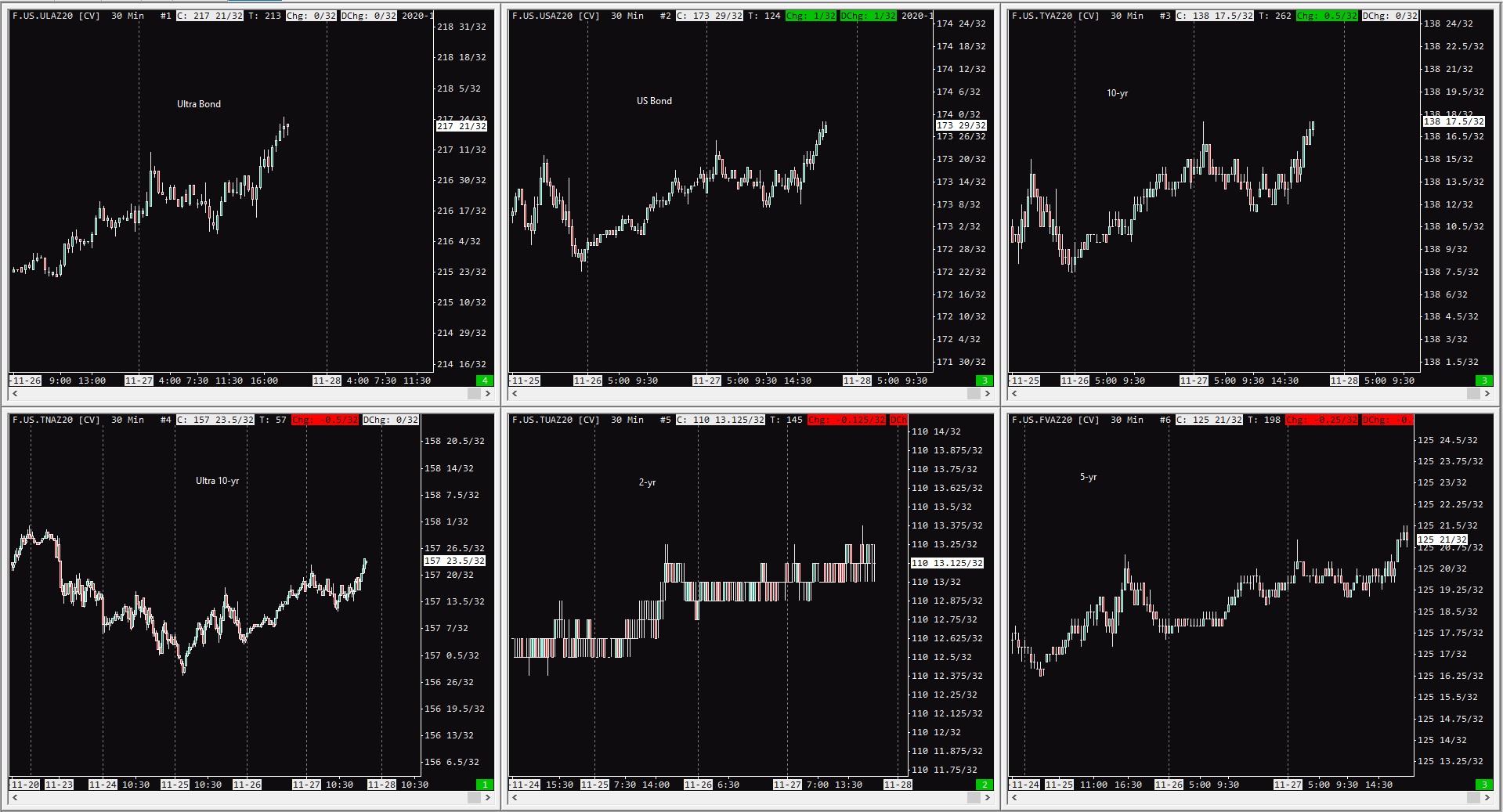
All of these products differ by their liquidity and contract specifications with the 10-Year Treasury Note being the most traded one with around 1,000,000 daily volume similar to ES.
One thing that all treasury futures have in common is a face value of $100,000 and a $1,000 contract factor.
Expect a 2-year note which has a face value of $200,000 and a $2,000 contract factor.
The biggest difference between these contracts is the tick size.
The original US Treasury Bond and Ultra Bond have a minimal price fluctuation of 1/32 of a point which translates to $31.25 per tick.
10-year Note and Ultra 10-Year Note is half of that with $15.625 per tick.
The minimum tick size of a 5-year Note is a quarter of that with a $7.8125 value per tick.
2-year Note has also a minimum tick size of a quarter of 1/32, but since its face value is at $200,000, the one tick is valued at $15.625.
All US Treasury Notes expire quarterly and here you can take a look at their margin requirements on AMP futures.

The pit session for the US Treasuries is from 7:20 am until 2:00 pm Central Time, so they are more suitable for US traders but you can also trade them in the European afternoons.
In general trading, bonds are more complicated as you should be watching them all together and looking at the yield-curve.
But besides that, they are great liquid products where you can utilize tools such as footprint charts, market profile, and other orderflow analysis.
Crude Oil (CL)
If you decide to trade commodities, Crude oil is a very popular choice.
Crude Oil is traded in many forms.
Over the counter, ETFs, options, and futures.
The NYMEX WTI Crude Oil futures (CL), is the world’s most liquid and popular crude oil contract to trade.
Understand Crude oil is a little more complicated due to the fact that its contract expires every month and there is a lot of hedging going on in the oil market.
This is why using some orderflow tools might be a little confusing as you can see some large amount of selling for example that can give you an indication of potential hedge going on in the different months of expiration or options market etc.
This is quite a complex topic which was explained in this video by Macrohedged.
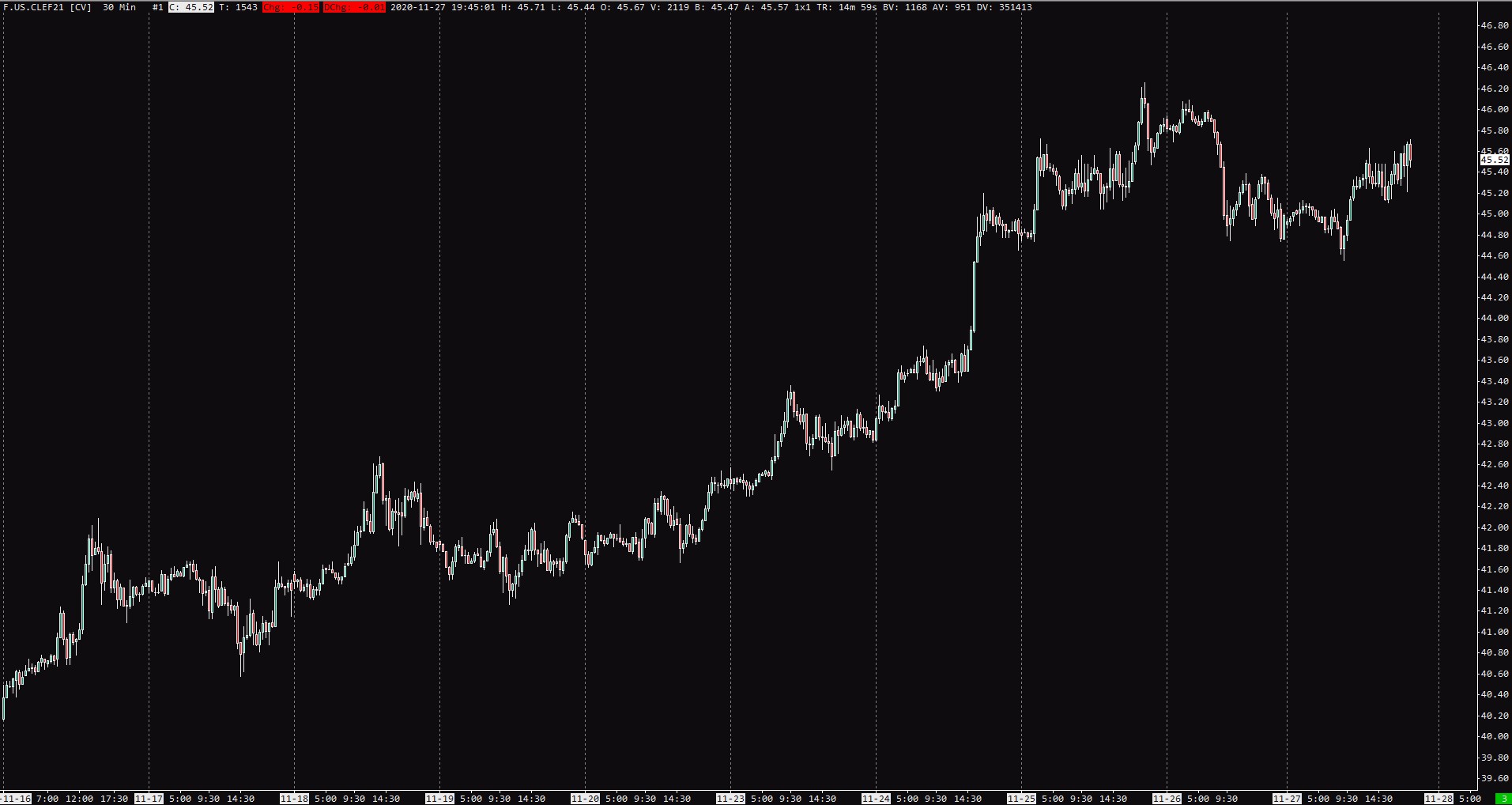
The minimum price fluctuation in Crude Oil is 0.01 per tick which equals $10.
100 ticks which equal to a $1 dollar change in the price of Crude Oil, is something we can see quite often.
As this represents $1000 in one futures contract, trading Crude Oil can be quite an expensive venture.
Because of that CME introduced an E-mini Crude Oil Futures (QM) that have a contract unit of 500 barrels compared to 1000 barrels in Crude Oil (CL).
QM has a minimum price fluctuation of 0.025 which represents $12.50.
As you can see this is not the same as 1/10th as in equity indices, but 1/2 of the CL.
If Oil moves from $45 to $46, in a CL contract this 100 tick move is equal to $1000 change for one contract (100x$10).
In QM the same 100 tick move represents a $500 change as it is a 40 tick move. (40x$12.5).
Pit session for Crude start at 8 am and last until 1:30 pm Central time.
On AMP Futures, you will need around $1200 margin to open on CL contract and half of that for QM.
What is worth mentioning when trading Oil is its heavy dependence on supply and demand dynamics.
Those that trade energies market should be aware of economic downturns and shifts in production by OPEC.
Because all of these fundamental things affect the oil market, we could see the price of front-month contract trading below zero in April 2020 as oil demand halted, while supply cuts from the OPEC were not scheduled to come into effect until the first of May which was after the expiration date of May 2020 contract.
Gold (GC)
Gold is actually quite similar to Crude Oil in a lot of ways, its daily ranges, minimum price fluctuation, dependence on supply and demand, and different markets where Gold is traded.
The minimum size unit on Gold Futures is 100 troy ounces.
The minimum price fluctuation is 0.10 per troy ounce which equals $10.
Although Gold is considered a safe haven since it acts as a store of value and maintains its purchasing power for thousands of years.

With a $20-$30 average daily fluctuation, quite a lot of money can be made in Gold Futures.
Gold is an expensive market to trade with almost $3,000 margin requirements on AMP futures per one contract.
Gold is traded in many forms.
Futures for gold are actually not the biggest venue for gold traders.
According to Gold.org, the biggest venue for gold trading is the OTC market called LBMA (London Bullion Market Association) with around 70% of daily traded volume.
Comex Gold which is the CME futures contract takes around 30% and Gold ETFs only 1-2%.

Because of that, you want to pay attention to trading Gold during London morning hours around 7-8 am GMT as when the LBMA opens for a day, but also US pit session hours that last from 1:20 PM GMT (7:20 AM CT) until its close at 6:30 PM GMT (12:30 PM CT).
Euro FX Futures (6E)
The Euro FX futures contract on CME is designed to reflect EUR/USD which is traded in the spot Forex market.
Do not confuse this with Eurodollar futures which are interest rate futures traded on CME.

Besides Euro futures, you can trade futures contracts for all Forex majors.
- Euro Futures = EUR/USD
- British Pound Futures = GBP/USD
- Australian Dollar Futures = AUD/USD
- New Zealand Dollar Futures = NZD/USD
- Japanese Yen Futures = USD/JPY (inverse)
- Swiss Franc Futures = USD/CHF (inverse)
- Canadian Dollar Futures = USD/CAD (inverse)
The Euro futures are the most liquid and popular ones with one contract representing 125,000 euro notional size.
If you ever traded spot forex, you know this equals 1.25 standard lots.
Minimal price fluctuation is set to 0.00005 = $6.25.
If this is too large for you, CME offers an E-Mini Euro FX and Mirco Euro Fx contracts.
E-mini Euro FX is half of normal Euro Fx future contract with a size of 62,500 and minimal price fluctuation of 0.0001 = $6.25.
Micro EUR/USD Futures represent 1/10 of Euro Futures with contract unit of 12,500 and minimal price fluctuation set on 0.0001 = $1.25.
One of the advantages of trading futures over spot forex can be found in the margins as AMP futures have very low margin requirements for their contracts.
Other brokers have them usually higher and they are equal to 1:30 leverage which is offered by most regulated Forex brokers.

There are no pit session hours in currency futures and you are better off monitoring the classic London, New York, and Asian session times that are well known in Forex.
Bear in mind that every day, there is a one hour break between 5 PM and 6 PM Central Time for all CME products and although Forex is opened 24 hours a day, currency futures are closed for this one hour period.
So what is the reason to trade currency futures over the Forex spot market?
Thanks to the transparency of the futures market, you can utilize more advanced trading strategies such as Volume Profile or Footprint charts and others I described in the Trading Blueprint.
This is something you can not do in OTC markets which spot Forex is.
If you decide to trade currency futures and use different orderflow tools, you have to bear in mind that volume on the spot market is much higher compared to futures.
This can results in some less accurate readings in orderflow compared to equity indices.
Euro Stoxx (FESX)
Euro Stoxx is the first market that is not traded in the CME, but it trades in the Eurex exchange.
Euro Stoxx 50 (FESX) represents an index of the top 50 European companies.
It is the most liquid product traded on Eurex with an average of 1,000,000 daily volume similar to E-mini S&P500 futures.
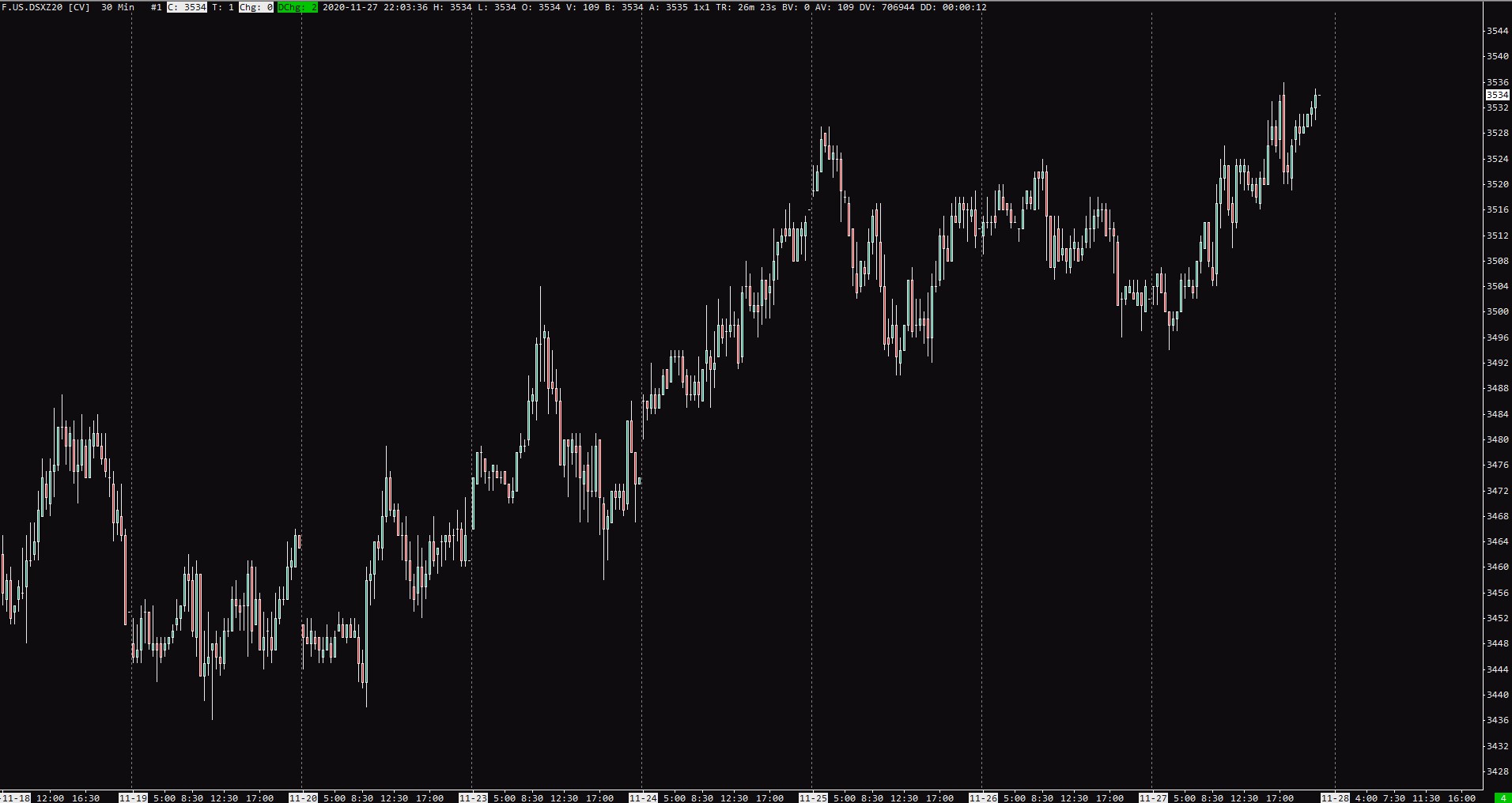
The contract by itself is actually quite similar to ES with different specifications.
The minimum price fluctuation in FESX is 1 point which equals 10 Euros.
Margin requirements are quite low on AMP Futures at approximately $1,000 for 1 contract.
Euro Stoxx is a very liquid market and you will often time see a few thousand lots sitting at bid and offer.
It is a great market for all traders that want to trade during European hours and want to especially focus on utilizing tools such as Market Profile, Footprint, and Orderflow.
Market Opens at 1:15 am Central European (at 2 am during summertime) and close at 10 pm Central European time.
The cash session for FESX is from 8 am CET until the settlement price at 17:30 pm CET.
In general, the best time to trade is during the first few hours after the open and then at MOC (market on close) at 5 pm.
Dax (FDAX)
If Euro Stoxx can be compared to S&P500, Dax would be very similar to Nasdaq.
It is a very thin contract that moves a lot during the trading day and can average several hundred point moves.
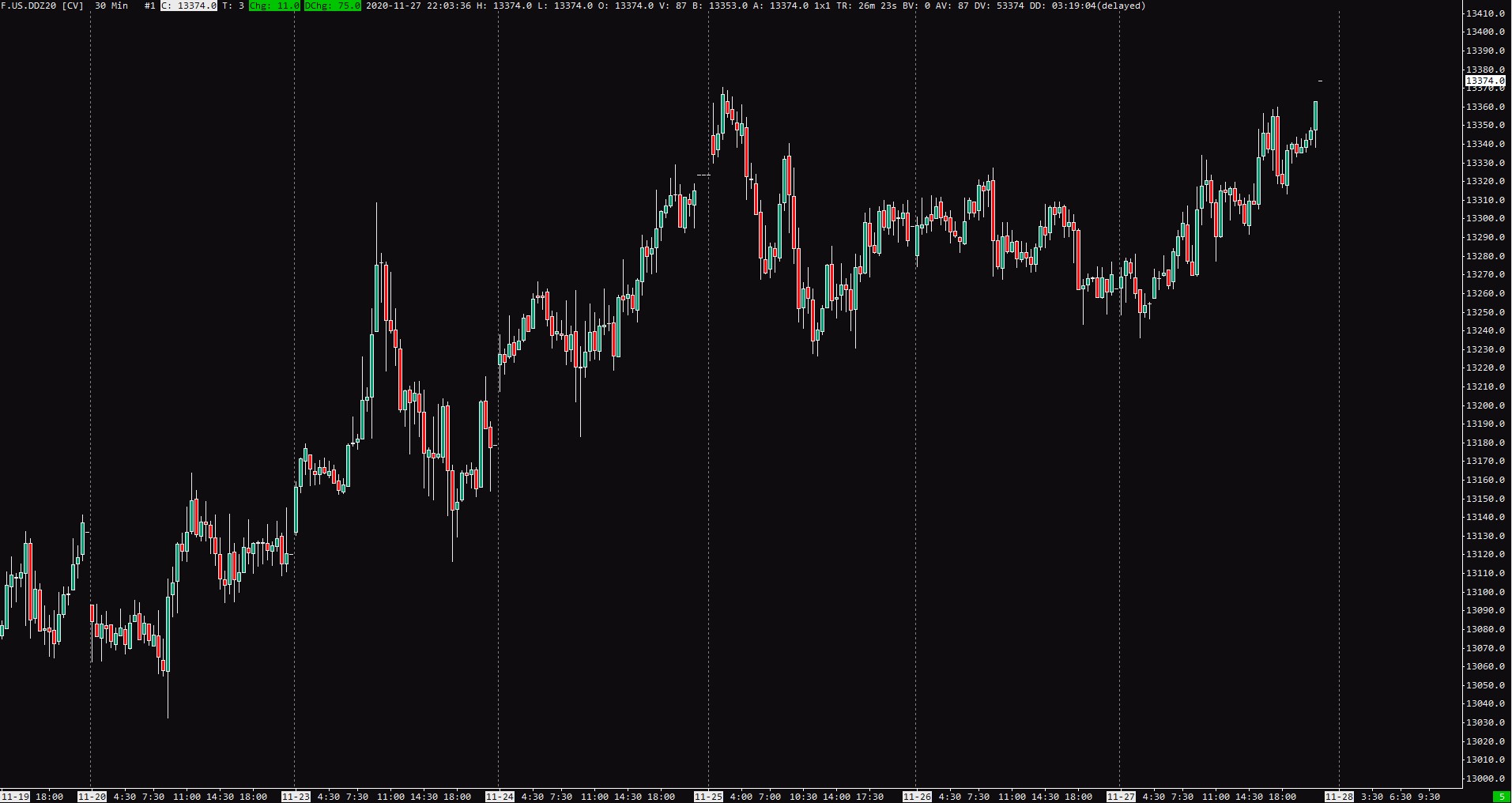
Dax is an index of the 30 biggest companies in Germany and it has the same trading hours as Euro Stoxx50.
Due to the fact that minimum price fluctuation is 0.5 point which equals to €12.50.
Dax futures are quite an expensive product to trade.
The day trading margin for Dax futures is €2,500 and if you want to hold your position overnight, you will need approximately €50,000.
Since Dax futures can be really expensive for a lot of traders, there are two alternatives you can do if you want to trade Dax.
Mini-Dax was released by Eurex a few years ago and it represents 1/5 of the Dax Futures contract.
Margin requirements for mini-Dax are also 1/5 of Dax futures.
This means that 1 point movement in Mini-Dax represents €5.
Although volume is usually higher on Dax Futures due to the bigger position size, you can find more liquidity resting inside the Mini-Dax futures.
The second option of trading Dax is via a CFD.
Those trades that don’t have enough capital to even trade Mini-Dax (€10,000 – €20,000 to sustain good risk management), can trade Dax via CFD where 1 point movement usually represents €1.
The downside of trading a CFD is the fact that traders have to factor a spread, but Dax is one of the few markets where it doesn’t really matter.
Because of the extreme popularity of Dax in Europe, most CFD brokers compete against each other to have the best trading conditions for Dax.
This is why you will oftentimes find brokers with around 1 point spread and since Dax really does move a lot, this one point is negligible.
Bund (FGBL)
In Europe, Bund is the most traded interest rate futures contract with a similar volume to Euro Stoxx 50.
It is the 10-Year German Bond that is traded alongside a 5-year Bobl and 2-year Schatz in the Eurex exchange.
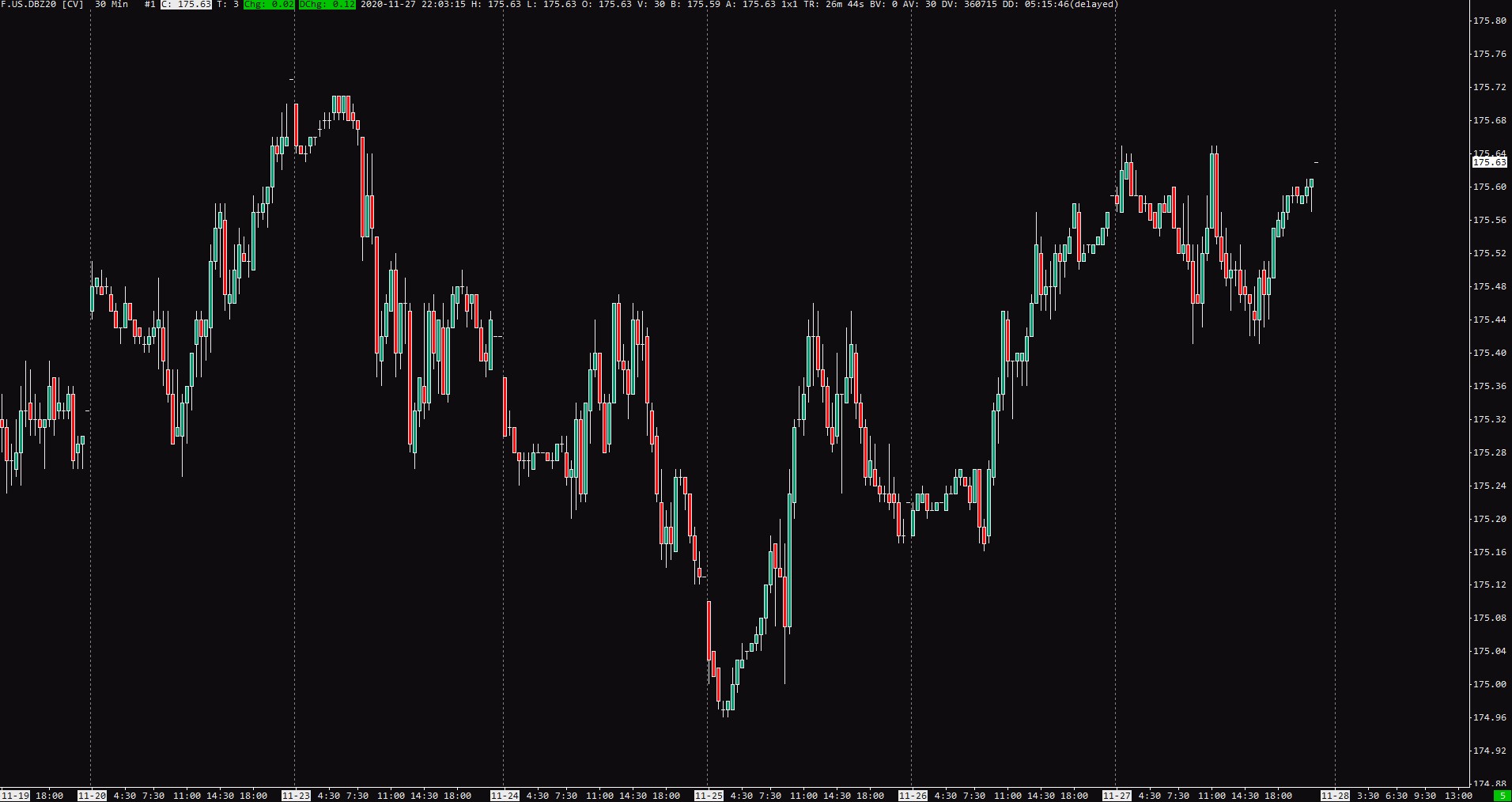
It is a very liquid and extremely popular product trade with a minimum price fluctuation of 0.01 which equals €10.
Since it responds very well to Market Profile levels and Orderflow patterns, it is my main market of choice.
Cash hours for Bund are set from 8 am to 5:15 pm CET.
It is a cheap product to trade with daily margin requirements set at $800.
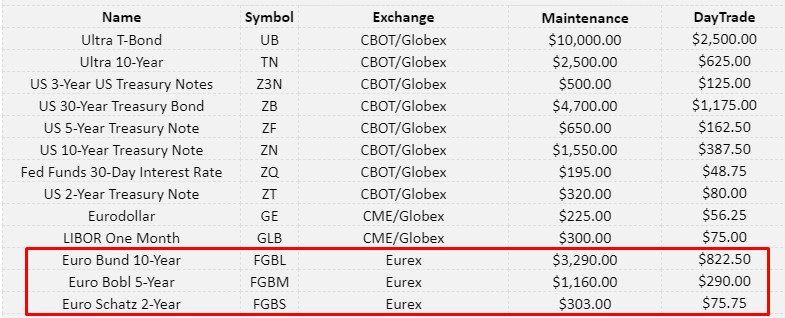
Trading Bund is a great choice for traders that want to be active during European morning hours and don’t want to trade Eurex index futures which very often heavily follow S&P500.
Bitcoin
Compared to legacy futures markets, you can find perpetual contracts (swap contracts) in the cryptocurrency space.
Perpetual contracts don’t have an expiration date and settlement.
A full understanding of cryptocurrency futures is beyond this article, but I recommend you to read this article where it is well explained.

Cryptocurrency brokers that allow trade perpetual swap offer adjustable leverage without any minimum trading size.
This means that you can start as small as you want without any limitations like overnight margins, position size, etc.
The only difference comes in if you want to trade Bitcoin Futures on CME.
CME Bitcoin Futures rose to great popularity recently as we could see a high increase in Open interest.
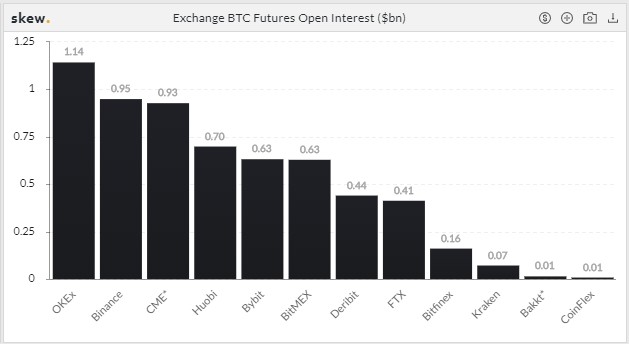
Personally, I expect this only to rise in the future as more institutional traders step into the cryptocurrency trading space.
Bitcoin CME contract has minimal contract unit of 5 Bitcoin so It is quite a big contract to trade compared to other crypto exchanges such as Binance or Bitmex.
Because of that required margin for trading Bitcoin on CME is $33850.
Bitcoin does not have any RTH session but as OI on CME rising every day, I personally expect more volatility during the US trading hours.
As most of you probably know, Bitcoin is a very volatile product so you won’t have much problem finding opportunities almost every day.
One thing which is tricky is the fact that different exchanges have different prices and price structures on their Bitcoin Perpetual Swaps.
This can result in some larger wicks on some exchanges compared to others.
That’s why it might be a great idea to track multiple exchanges and their orderflow to get an overall picture of what is going on.
Fortunately, you can use platforms like Exochart which tracks the flow of all major crypto exchanges and makes things much easier.
Cryptocurrency Futures
With the rising popularity of cryptocurrency futures trading, you can not only trade Bitcoin but almost every other popular cryptocurrency.
They are not traded on CME but on brokers like Binance, Bybit, or Bitmex which specialize solely in trading crypto.

Conditions for all of these coins remain more so the same.
You have flexible leverage and no minimal contract sizes.
The only thing you should be mindful of is if you decide to trade less liquid products as you might have a problem getting in and out of the market.
But if you stick to popular cryptocurrencies such as Ethereum, Ripple, Link, or Stellar.
You can find plenty of opportunities for both intraday and swing positions.
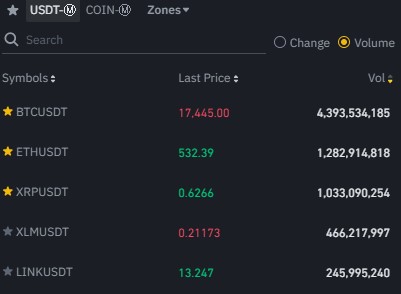
If you decide to trade cryptocurrencies you should be very cautious about a brokerage you decide to use as more regulatory precautions are hitting the cryptocurrency space which can result in exchanges closing down or halted withdrawals which we could see on exchange OKEX and it lasted for over a month.
Nikkei (NK225M)
Futures trading is very popular in Asia, therefore, would be a shame not to cover at least some markets traded there.
Nikkei225 is traded on both OSE (Osaka Stock Exchange) and CME.
It is calculated in Japanese yen and it weights 225 blue-chip companies listed on the Tokyo Stock Exchange.
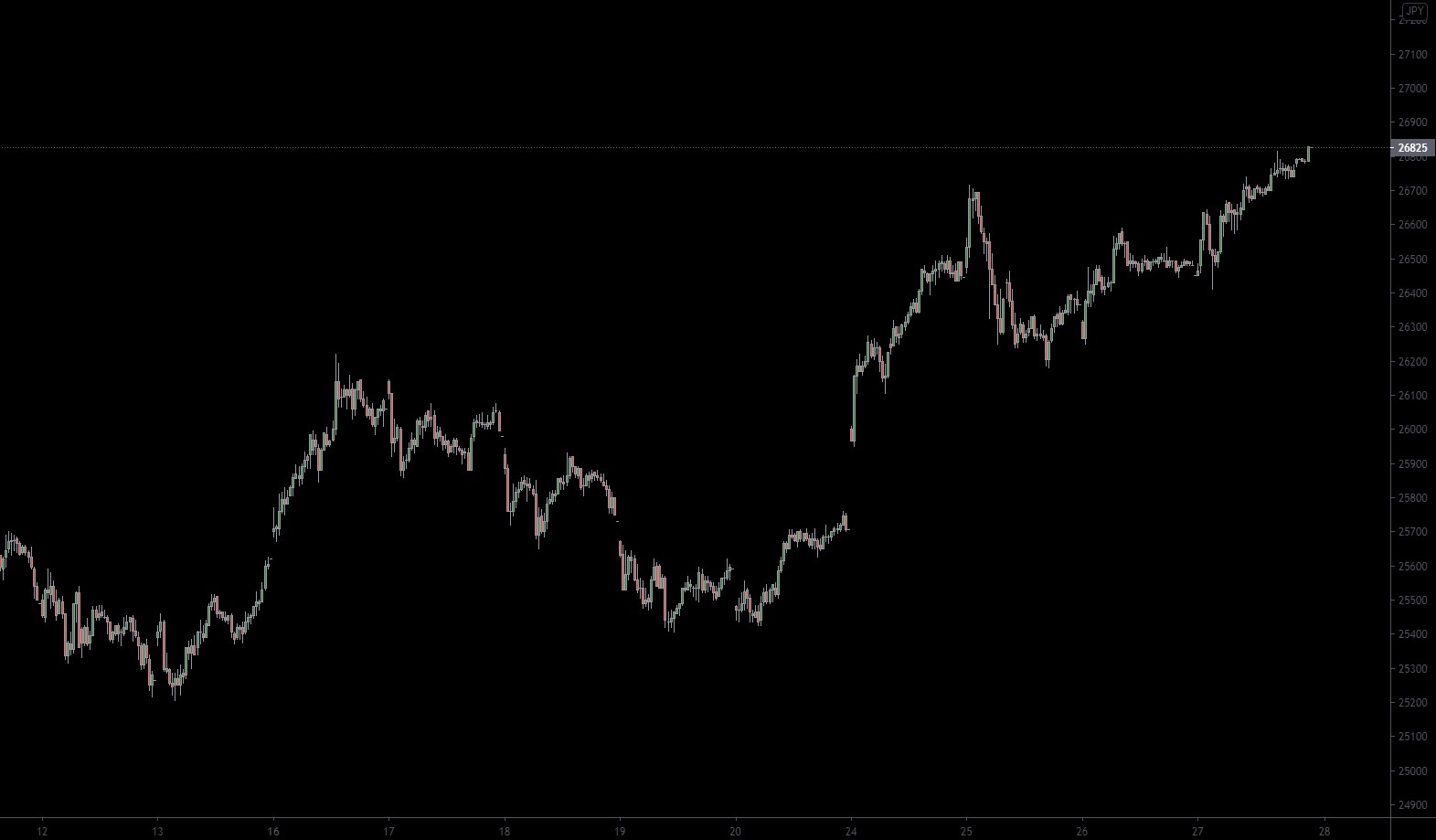
Although there are Nikkei 225 Futures, the most popular and liquid futures contract in whole Asia Mini Nikkei 225.
It is a tenth of the contract size of Nikkei 225 Large Contract.
Minimum price fluctuation on Mini-Nikkei represents ¥5 equals tick value of ¥500 (approximately $5).
Trading hours are set from 8:45 am to 15:15 pm Tokyo time and continue after a 75-minute break from 16:30 pm until 5:30 am.
With the most volume during morning Tokyo hours.
This makes it a great product to trade not only for those who live in Asia but also for traders from the US who want to trade in late afternoon hours.
One extra bonus for a mini-nikkei contract is low margin requirements of only $250 per one contract.
Other Futures Contracts
I hope that you liked this article about the best futures markets to trade.
Of course, I wasn’t able to cover all of them as it’s simply too much of them.
If you live in Asia, you can have a look at markets like Nifty, Hang Seng, or Kospi.
Both CME and Eurex also have some contracts which I didn’t cover and might be worth look into.
Also if you are in Europe you might want to look at ICE Exchange which offers FTSE100 or Brent Oil.
The key point is for you to try these different markets and find what suits you best.
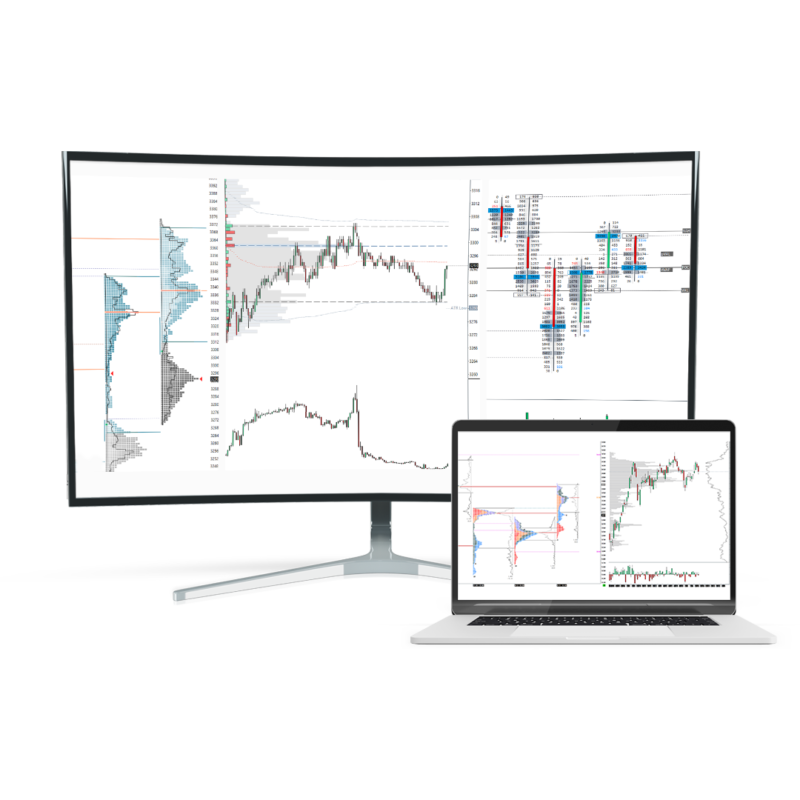

DefVader
Again, another incredible article. I appreciate the time and effort you take to share this info with us!
TheFlowGuy
Hi!
These detailed explanations are priceless!
The more i know the orderflow world the more i see it can be relatively expensive. So if you want to trade oil, gold, spx and stocks you should pay f.e. sierra 36$/m + data exchange feed f.e cme group another 31$/m. It is ok. But this is the basic. Using some advanced tool like bookmap, quanttower ~100$/m + cme data + 100$ + nasdaq equities +60$ = 260$/m.
Is there any workaround? I mean the tools would be ok because most of them could give lifetime license but the additional datafeed / m is significant (comparing to other trading methods with the ~150$/year TradingView license)
Another question: How about using volume profile and vwap on the cfd’s? Is it less relevant than their futures? Actually todays markets have many algos/bots so the reaction and the volume ‘action’ should be the same (in proportion) in exchanges/markets.
Speaking about sp500 and crude oil especially. Vwap, VP – Value Area and poc s are quite in the same range in swing trading perspectives. What do you think?
Thank you in advance
Adam
Hi,
yes, it can be an expensive game to play for sure. Me personally I only pay for Sierra Chart with Eurex and CME data so it is around $80 per month.
I don’t feel like I need much more in my trading, but I plan to test out Bookmap in the near future.
For trading CFDs, I think it is okay if you are watching something like long term composite profiles where accuracy is not that needed, but as they are calculated based on price changes not volume, I think you are much better of watching futures chart instead.
TheFlowGuy
Yes, that 80$/m is okay and sierra has yearly sub and that is exceptionally cheap.
So cfds volume calculation is an approximation by the changing of the price? That means cfds totally indifferent in orderflow perspectives 🙂
Thank you!
Adam
Yes buying a yearly sub is the best value for money, or you can make an account at AMP and they have a special offer which is around $26/month for pkg5.
Here is great article about Volume in forex (and CFDs) by paracurve, I’m sure it will shed more light on the manner – https://paracurve.com/2018/10/volumes-in-fx-useful-or-useless.html
TheFlowGuy
Really interesting. In the last section he wrote the same as i said about the similarities of VP but the cvd comparison looks horrible. My personal conclusion is MP could be really the same but for volume things we should use futures only.
Thank you again!